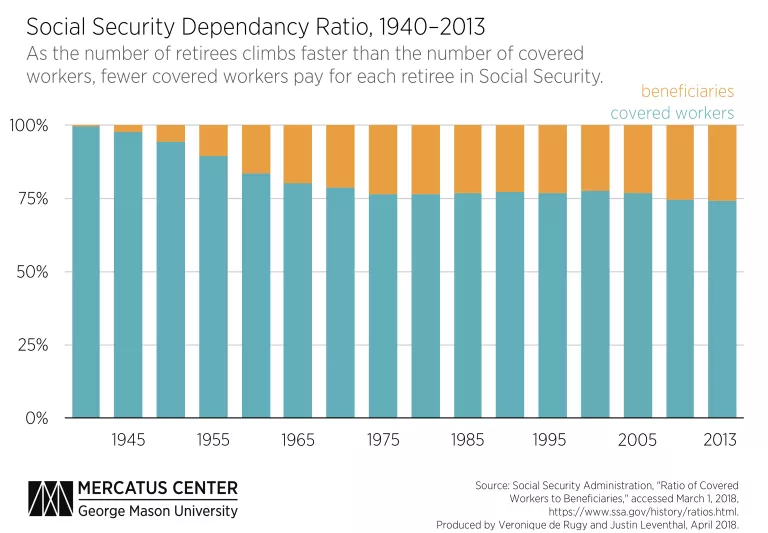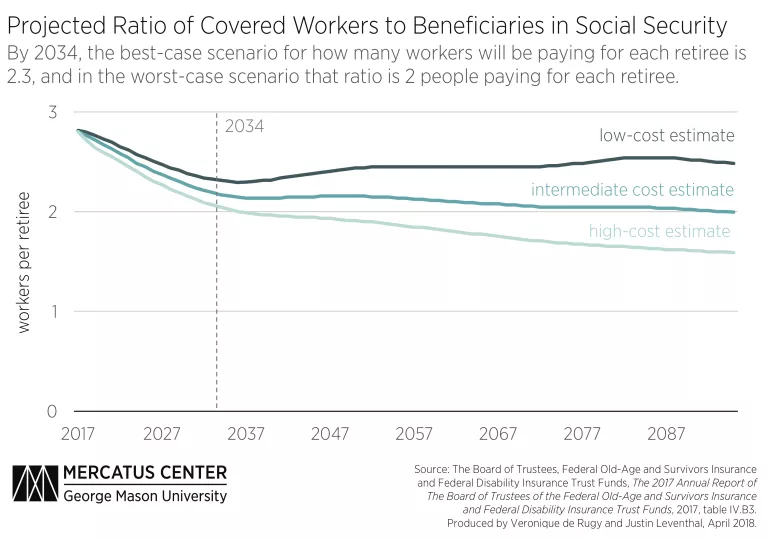- | Government Spending Government Spending
- | Data Visualizations Data Visualizations
- |
How Many Workers Pay the Benefits of Each Social Security Retiree?
Without reform to the Social Security system, the ratio of workers paying for each retiree will become too low to sustain it.
Over its lifetime, the Social Security program has gone from having an abundance of workers per retiree to having fewer than three workers per retiree. This change was partly to be expected, as the first participants in Social Security had to reach retirement age before drawing any benefits. As a result, during the years leading up to retirement of the first participants, the increase in total participants was largely made up of new workers, not beneficiaries. It wasn’t until 1975, 40 years after the establishment of the program, that the growth in beneficiaries was proportional to the growth in workers.

The ratio of workers to retirees is projected to continue falling. By 2034, the best-case scenario is 2.3 workers paying for each retiree, and in the worst-case scenario that ratio is 2 workers per retiree.


